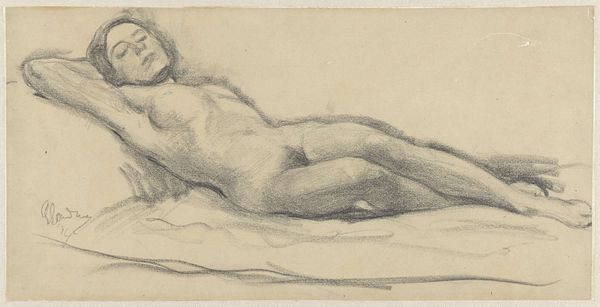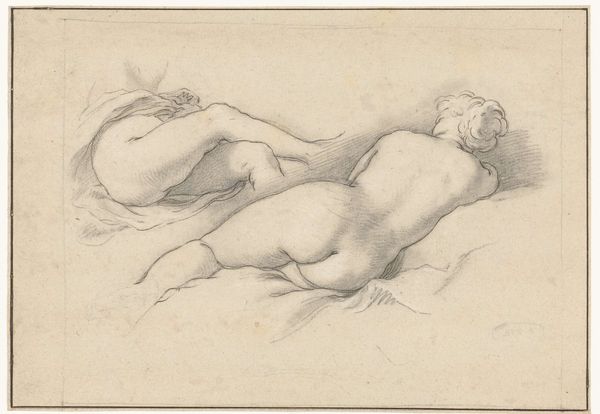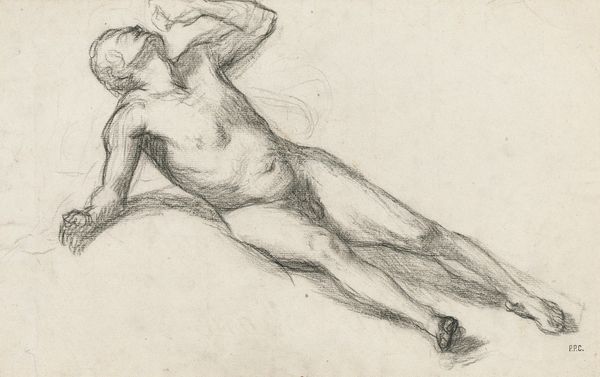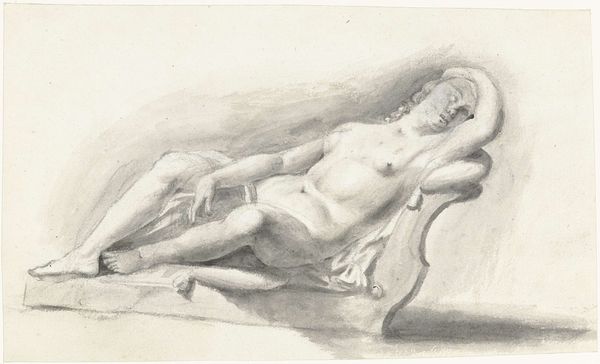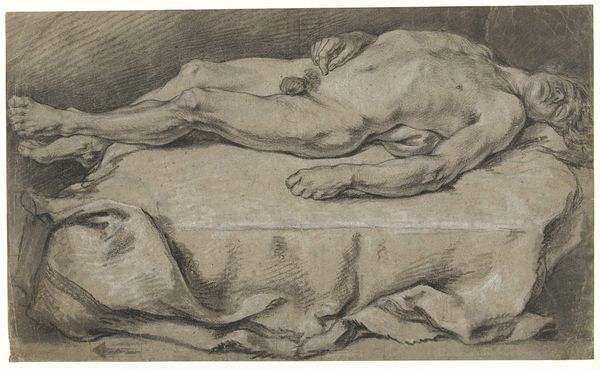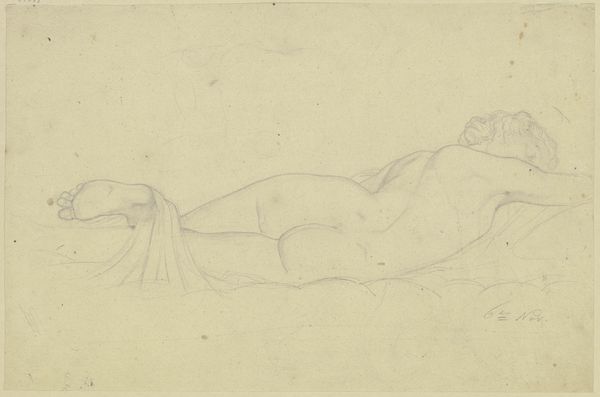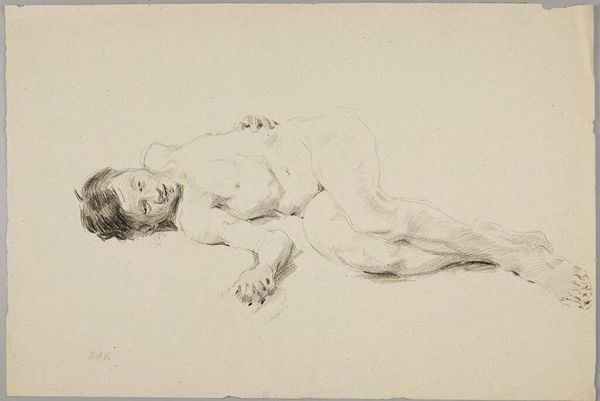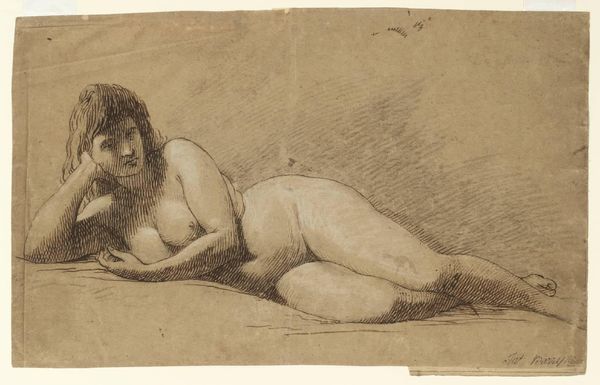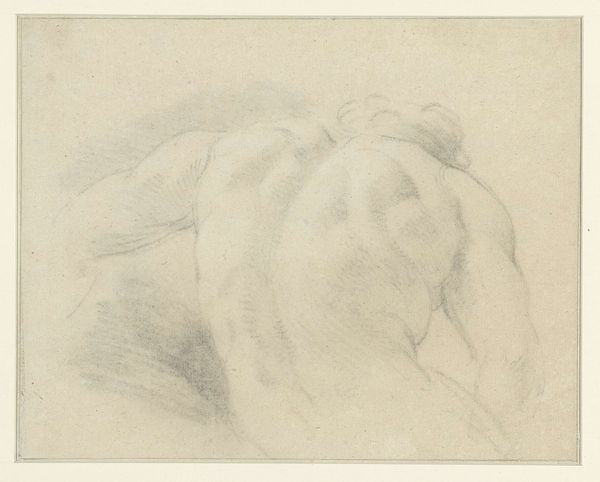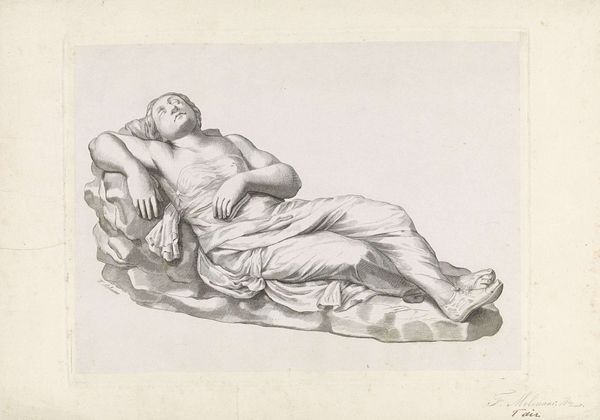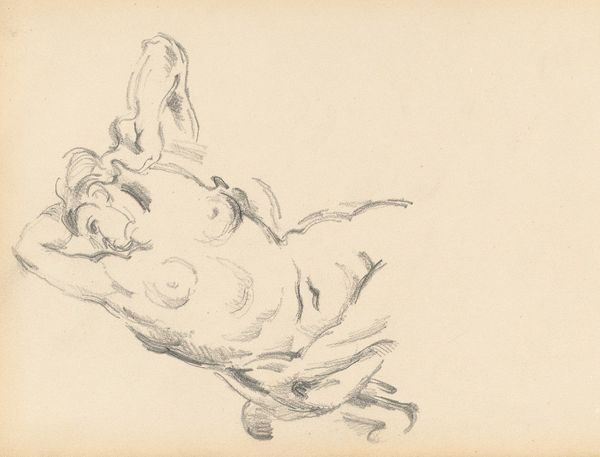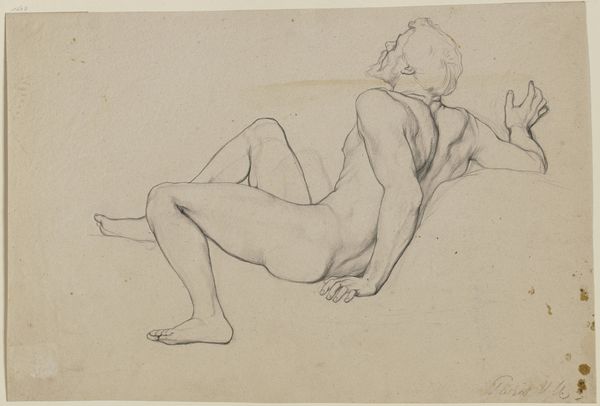
drawing, dry-media, pencil
#
drawing
#
baroque
#
charcoal drawing
#
figuration
#
dry-media
#
pencil drawing
#
pencil
#
northern-renaissance
#
academic-art
#
nude
Dimensions: height 146 mm, width 198 mm
Copyright: Rijks Museum: Open Domain
Curator: Here at the Rijksmuseum, we have "Study of a Reclining Female Nude," created by Abraham Bloemaert around 1645-1651 using pencil and charcoal. What's your initial take on this piece? Editor: There's a stark, almost unsettling realism. The artist seems focused on weight and texture, rather than idealizing the female form. It's quite earthy in its depiction. Curator: Bloemaert's place in the Northern Renaissance tradition comes through in his dedication to realistic portrayal. How do you think his choices impact the viewer's interpretation of femininity at the time? It's crucial to see how identity and representation were shaped within the constraints of Baroque societal norms. Editor: Definitely, it moves beyond a romantic vision. He presents her materiality; how she occupies space, how her body folds and rests. We can see the pencil strokes working, mapping the volume. It’s the evidence of labor, the hand of the artist shaping the work, making it tangible. Curator: It pushes the boundaries of conventional depictions, I agree. Bloemaert navigates the tension between the accepted artistic language and a raw honesty. This challenges us to reflect on who held the power to shape the female image and for what purposes. Editor: And the choice of pencil and charcoal contribute so much. The relative accessibility and lack of pretension lets the subject shine without being bogged down by status and expectation. It focuses us on the body itself, devoid of classical embellishments. Curator: Exactly, the accessibility of the materials fosters a more democratic gaze. It encourages us to think critically about gender roles and power dynamics that still resonate in contemporary art and society. Editor: Ultimately, I find that it’s that relationship between the materials, subject, and the working process that give it strength, opening a wider lens into artistic making, as it was—and still is. Curator: I'm with you. Bloemaert offers not just a representation, but a point of reflection for a deeper exploration of societal norms surrounding the female body then and now.
Comments
rijksmuseum about 2 years ago
⋮
Bloemaert had more than a hundred pupils, including his four sons. To learn how to draw in their master’s style, they copied Bloemaert’s drawings. This proved so useful that Frederik Bloemaert made prints after a number of his father’s study sheets, including the one on view here. These prints were published in a model and study book for artists in training.
Join the conversation
Join millions of artists and users on Artera today and experience the ultimate creative platform.
